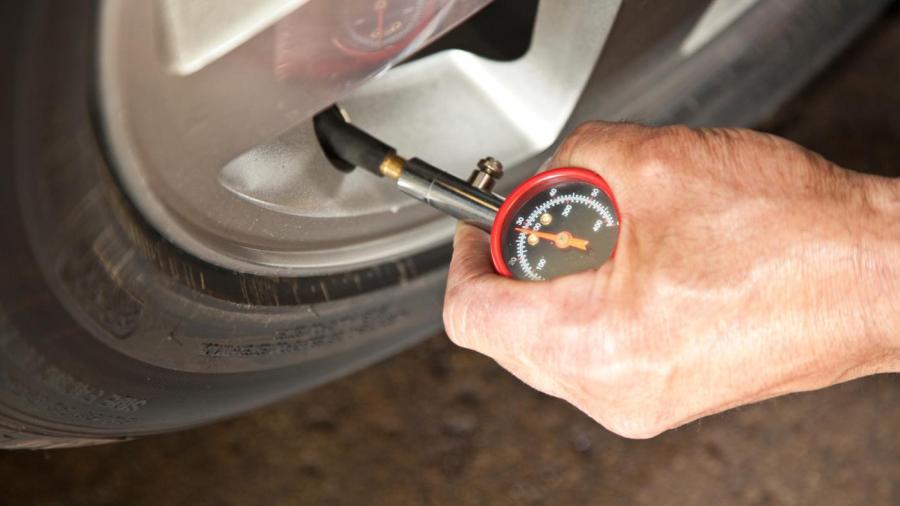How Do You Check Tire Pressure?

To check tire pressure, remove the valve cap, hold the tire gauge over the tire stem, and press down with a firm, swift movement. Read the marking on the bar that pops out if using a standard gauge or the reading on the screen for a digital gauge.
Measure tire pressure after the vehicle sits for at least three hours or after driving 1 mile or less so the tires are still cold. Review the recommended tire inflation for your vehicle, which is usually on the driver’s side door jamb and in the manual. Compare the pressure reading on the tire gauge to the recommended tire pressure for your vehicle. Add air as needed to reach the recommended pressure.
A tire gauge measures the tire’s pressure in pounds per square inch, abbreviated as PSI. Cars display the recommended pounds per square inch on the doorjamb on the driver’s side or in the glove box. Users should follow the pressure printed on the vehicle, which may differ from the number printed on the tire.
When pressing the tire gauge onto the valve stem, a fast and firm motion gives an accurate reading. Taking two or three readings helps get an accurate measurement. If the numbers are consistent, the reading is likely accurate.
Drivers should check tire pressure regularly. Correct pressure is necessary for fuel efficiency, safe handling and longer lasting tires.





